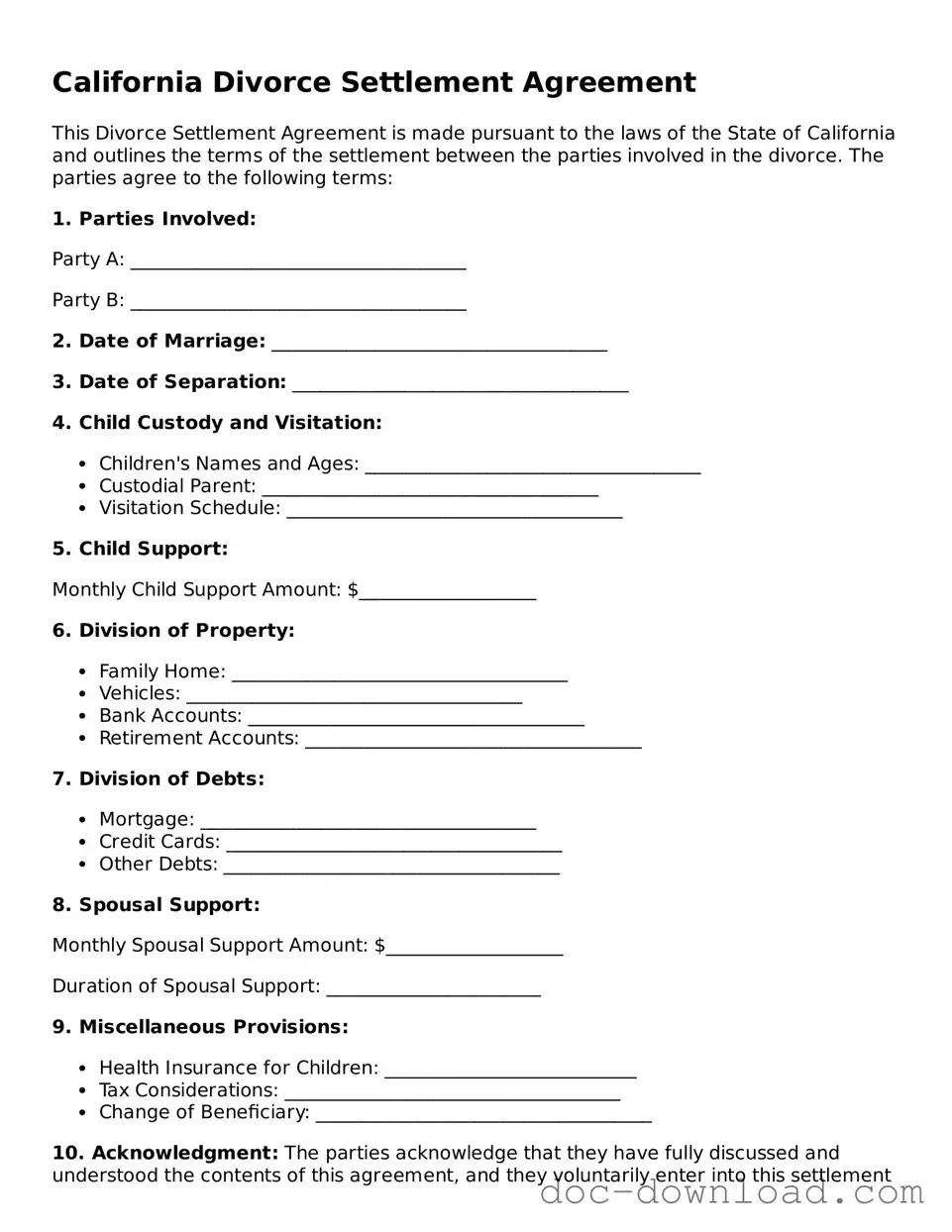The California Divorce Settlement Agreement form shares similarities with the Marital Settlement Agreement. Both documents outline the terms of the divorce, including division of assets, child custody, and support obligations. While the Divorce Settlement Agreement is specific to California, the Marital Settlement Agreement can be used in various states, providing a framework for couples to settle their disputes amicably without going to court.
Another document akin to the Divorce Settlement Agreement is the Child Custody Agreement. This document specifically addresses the arrangements regarding the care and custody of children following a divorce. Like the Divorce Settlement Agreement, it aims to minimize conflict and ensure the best interests of the children are prioritized, detailing visitation schedules and decision-making responsibilities.
For those looking to solidify their estate planning, a well-drafted Last Will and Testament is crucial. This document ensures your wishes regarding asset distribution are fulfilled. To learn more, visit this page on the Maryland Last Will and Testament form that can help you get started on creating a plan for your legacy.
The Separation Agreement is also comparable to the Divorce Settlement Agreement. This document is often utilized when couples decide to live apart before finalizing their divorce. It covers similar topics, such as property division and support, allowing couples to establish clear terms while they navigate their separation, which can later be incorporated into the final divorce settlement.
The Property Settlement Agreement is another related document. This agreement focuses solely on the division of marital property and debts. It details how assets will be divided and can be a component of the Divorce Settlement Agreement. Both documents aim to provide clarity and prevent future disputes over property after the divorce is finalized.
A Parenting Plan is similar to the Divorce Settlement Agreement, particularly regarding child-related issues. This document outlines how parents will raise their children post-divorce, covering custody arrangements, visitation schedules, and communication methods. Like the Divorce Settlement Agreement, it emphasizes cooperation and the well-being of the children involved.
The Alimony Agreement can also be compared to the Divorce Settlement Agreement. This document specifically addresses spousal support, detailing the amount and duration of payments. While the Divorce Settlement Agreement may include alimony terms, the Alimony Agreement focuses solely on financial support, ensuring that both parties understand their obligations after the divorce.
The Financial Disclosure Statement is another document that resembles the Divorce Settlement Agreement. This statement requires both parties to disclose their financial situations, including income, assets, and debts. Transparency is crucial in both documents, as the information provided can influence the terms of the Divorce Settlement Agreement, particularly regarding support and property division.
The Child Support Agreement is similar in that it specifically addresses financial responsibilities toward children. This document lays out the amount of support one parent will provide to the other. Like the Divorce Settlement Agreement, it is essential for ensuring that children's needs are met and that both parents understand their financial obligations.
Lastly, the Final Judgment of Dissolution of Marriage is related to the Divorce Settlement Agreement as it is the official court document that finalizes the divorce. While the Divorce Settlement Agreement outlines the terms agreed upon by both parties, the Final Judgment incorporates those terms into a legally binding order, ensuring compliance and enforcement of the agreements made during the divorce process.
